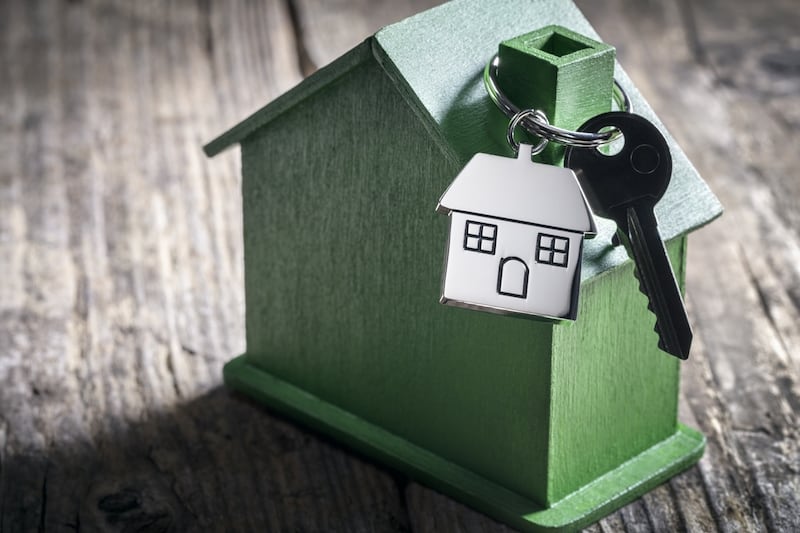When Casement Park’s towering floodlights came on, they lit up west Belfast.
“Whether it was Monday or Friday and you saw the lights were on for an evening game, you texted people to see if they wanted to head up. It was just a place where everybody would go,” says Antrim GAA player Patrick McBride.
Today, McBride is standing in front of padlocked gates at the derelict grounds where he made his debut in an Ulster Championship match against Monaghan a decade ago – in what was to be the last county game ever played at the Andersonstown venue before its 2013 closure.
“I’m getting goosebumps actually remembering back. I was 19 and just out of school, all your classmates were around watching you, there was saffron everywhere; it was a childhood dream for me to play for the county.
RM Block
[ Euro 2028 comes to the rescue of much put-upon Casement Park projectOpens in new window ]
[ What is the current situation with Casement Park's redevelopment?Opens in new window ]
“Croke Park is class but in Casement you felt like you were playing on a carpet; it was a perfect surface.”
Overgrown weed-infested grass and crumbling terraces are what’s now left of Casement following the stadium’s stalled redevelopment. Under a grey October sky, it is desolate.
But in the streets surrounding the sprawling grounds, there is a buzz.
Twenty-four hours earlier, the withdrawal of Turkey to host the Uefa Euro 2028 football tournament meant it was a one-horse race for the joint UK and Irish bid.
Hopes rekindled
Focus immediately shifted to the rebuilding of Casement as the Northern Ireland venue for matches. After a decade of delays amid legal challenges, soaring costs and political rows, hopes for a 34,000-capacity stadium in the heart of west Belfast were rekindled.
“The fact it would bring thousands of people to the area and generate income is only a positive thing,” says Catherine McQuaid, who lives in an apartment across the road from the boarded up grounds.
As well as it being positive for the locality, personally I imagine my apartment would go up in value. I’ve lived there 16 years. I want to sell and move up the road and buy a three-bedroom semi. That’s the dream
— Catherine McQuaid
“At the initial stage, when the GAA first applied for planning years ago, the worry was: ‘Are we going to be blocked in here on match day?’
“Looking at it now, it’s a big empty space where nothing’s happening. I work in a primary school and have heard concerns about local children having access to it. The hope is that it wouldn’t just be for the big games and the concerts.
“As well as it being positive for the locality, personally I imagine my apartment would go up in value. I’ve lived there 16 years. I want to sell and move up the road and buy a three-bedroom semi. That’s the dream.”
Eamon McManus lives down the street and welcomed the Euros bid as a “great bonus” in getting the project restarted.
“I wish it would hurry up and get done,” he says.
“People are a wee bit bitter that it’s gone on so long. They just want to see it get started now.”
‘A monstrosity’
The redevelopment has caused political divisions to surface.
Rebuilding Belfast’s Casement Park with a “blank cheque” from public money to host the Euro 2028 football tournament has been fiercely opposed by the Democratic Unionist Party (DUP).
Nationalist and Alliance political representatives have, however, welcomed the news, with Sinn Féin First Minister designate Michelle O’Neill describing it as “the opportunity of a lifetime” for west Belfast.
“The hosting of this prestigious tournament would grow our economy, create jobs, and showcase everything that makes our island and people amazing,” she wrote on social media.
I’d definitely love to see it built; even when it was up the last time, there was just a lovely buzz around the area with families coming every week to the different matches
— Catherine McLaverty
In 2012 when reconstruction work was first announced, some residents also opposed the new stadium plan for more prosaic reasons, branding it “a monstrosity”.
Margaret Russell was among those who joined a residents’ group that took legal action to block planning approval.
Does she still feel as strongly?
“I wouldn’t have minded them building a smaller one as I think it’s far too big. To me, it’s all about the concerts and bringing in money. I’ve lived here 24 years and when the matches were on we had to leave cones outside our door, they would come along and lift them to park. I don’t know how they’ll manage parking with bigger games.”
But Catherine McLaverty, who has lived in the area for 25 years, believes a new stadium will be a “win-win”.
“I’d definitely love to see it built; even when it was up the last time, there was just a lovely buzz around the area with families coming every week to the different matches.
“It’s a yes from me.”
Walking out of the grounds, Antrim player Declan Lynch looks up the empty stand behind him.
“When you grew up you never thought this place was going to be taken away,” he says.
“It’s closed 10 years; it’s a generation lost. This is an opportunity to showcase west Belfast on an international stage. Just get it built.”




















